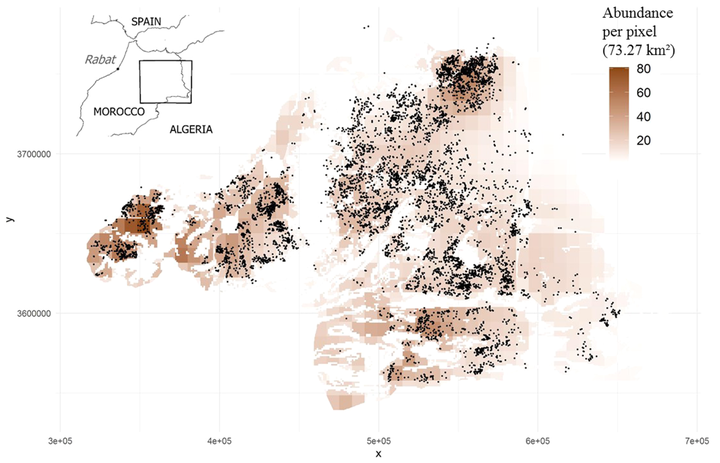
Abstract
Although density-dependent processes and their impacts on population dynamics are key issues in ecology and conservation biology, empirical evidence of density-dependence remains scarce for species or populations with low densities, scattered distributions, and especially for managed populations where densities may vary as a result of extrinsic factors (such as harvesting or releases). Here, we explore the presence of density-dependent processes in a reinforced population of North African Houbara bustard (Chlamydotis undulata undulata). We investigated the relationship between reproductive success and local density, and the possible variation of this relationship according to habitat suitability using three independent datasets. Based on eight years of nests monitoring (more than 7000 nests), we modeled the Daily Nest Survival Rate (DNSR) as a proxy of reproductive success. Our results indicate that DNSR was negatively impacted by local densities and that this relationship was approximately constant in space and time: (1) although DNSR strongly decreased over the breeding season, the negative relationship between DNSR and density remained constant over the breeding season; (2) this density-dependent relationship did not vary with the quality of the habitat associated with the nest location. Previous studies have shown that the demographic parameters and population dynamics of the reinforced North African Houbara bustard are strongly influenced by extrinsic environmental and management parameters. Our study further indicates the existence of density-dependent regulation in a low-density, managed population.